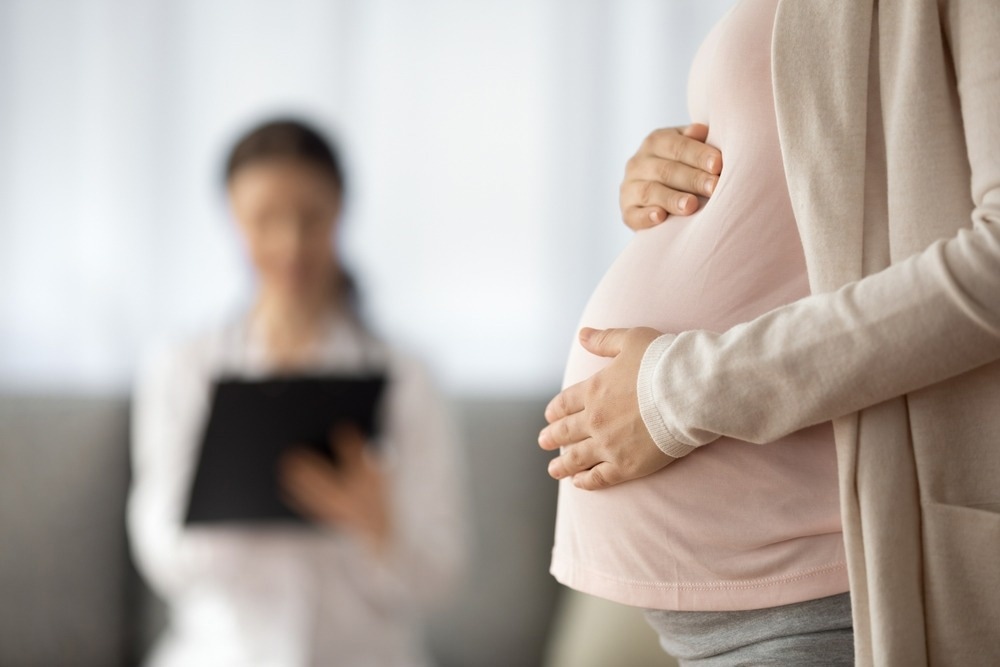In a recent study published in JAMA, a group of researchers assessed the relationship between maternal cannabis use and adverse pregnancy outcomes linked to placental function.
 Study: Cannabis Exposure and Adverse Pregnancy Outcomes Related to Placental Function. Image Credit: fizkes/Shutterstock.com
Study: Cannabis Exposure and Adverse Pregnancy Outcomes Related to Placental Function. Image Credit: fizkes/Shutterstock.com
Background
The rising trend of cannabis use among pregnant individuals, alongside a growing perception of its safety, poses challenges in understanding its effects on pregnancy outcomes. Existing studies, largely reliant on self-reported cannabis use, likely underestimate actual usage due to social stigma and legal consequences. This discrepancy hinders accurate assessments of cannabis' impact on pregnancy.
Moreover, confounding factors in previous research, like nicotine use and other demographic differences, further complicate this understanding. Further research is needed to definitively understand the extent and mechanisms of how cannabis exposure during pregnancy impacts placental function and overall fetal development.
About the study
The present study focused on nulliparous individuals from eight United States (U.S.) medical centers. Participants were recruited between 2010 and 2013, and biological specimens were collected and stored for future use. Cannabis exposure was determined using urine immunoassay and confirmed with liquid chromatography tandem mass spectrometry.
The study classified cannabis exposure as either only during the first trimester or ongoing beyond the first trimester. The composite primary outcome included small-for-gestational-age birth, medically indicated stillbirth, hypertensive disorders of pregnancy, or preterm birth. Other secondary outcomes, such as components of the primary outcome and cesarean delivery, were also examined.
For analysis, the study employed propensity score weighting to adjust for sociodemographic characteristics, body mass index, medical comorbidities, and active nicotine use. Also, the analysis considered the issue of amount and the time of the cannabis exposure. The researchers estimated adjusted odds ratios and relative risks using the multiple logistics method and the modified Poisson methodology.
Study results
In this extensive analysis of the Nulliparous Pregnancy Outcomes Study: Monitoring Mothers-to-Be cohort, 10,038 participants were initially considered, with 92.2% (9257) being eligible for the ancillary study. Among these participants, 6.6% (610) were identified as having been exposed to cannabis during pregnancy.
A notable finding was that 32.4% (197 individuals) had exposure only during the first trimester, while 67.6% (413 individuals) had ongoing exposure beyond the first trimester. The study also revealed that other substance and nicotine use were more prevalent among those exposed to cannabis.
In terms of primary outcomes, the study focused on a composite of several adverse pregnancy outcomes. The analysis showed that cannabis exposure at any time during pregnancy was associated with a higher incidence of these adverse outcomes, with 25.9% in the cannabis-exposed group versus 17.4% in the non-exposed group. This association remained significant even after adjustments for various factors were made.
Secondary outcomes were also examined, particularly the association of cannabis exposure with small-for-gestational-age births. The results indicated a significant relationship, although no significant associations were found with neonatal morbidity or mortality. Additionally, stillbirths were initially associated with cannabis exposure in unadjusted models, but this link was not significant after adjustments.
The study also conducted planned secondary analyses focusing on the timing of cannabis exposure. It was found that ongoing cannabis exposure beyond the first trimester was associated with a higher risk of adverse outcomes. Interestingly, a dose-response relationship was observed, with higher cumulative levels of 11-nor-9-carboxy-Δ9-tetrahydrocannabinol (THC-COOH), a cannabis metabolite, correlating with a higher probability of adverse outcomes.
The cumulative THC-COOH levels among participants varied widely, and a significant finding was that levels exceeding 1024 ng/mL were linked to higher rates of adverse outcomes. This level of exposure suggests frequent cannabis use, potentially on an every-other-day basis. Previous research has shown a relationship between urine THC-COOH levels and the degree of self-reported cannabis use, which supports the findings of this study.
Despite the potential synergistic effects of cannabis and nicotine, the study did not find a significant interaction between these substances based on biological testing. This aligns with animal studies suggesting that cannabis can affect the placenta independently of nicotine. Given the active role of the endocannabinoid system in early pregnancy and placental implantation, the effects of cannabis on the placenta and its function are biologically plausible. This is supported by previous research showing histological changes in the placenta consistent with infarction and placental insufficiency in animals chronically exposed to cannabis.
The study also found a higher proportion of neonates exposed to cannabis in utero who were small for gestational age compared to those unexposed, as well as higher frequencies of stillbirth. However, no differences were noted in the incidence of hypertensive disorders of pregnancy between cannabis-exposed and non-exposed participants.
Conclusions
To summarize, researchers found a significant association between cannabis exposure, as determined through biological sampling, and adverse pregnancy outcomes, particularly those related to placental dysfunction. This association was observed even after accounting for various clinical and sociodemographic factors. Notably, ongoing cannabis exposure beyond the first trimester was linked to a higher risk of adverse outcomes, and a dose-response relationship was evident.